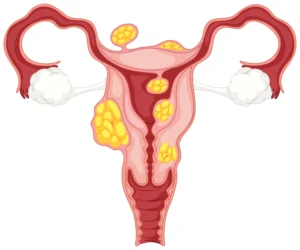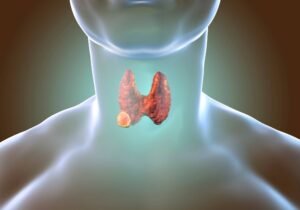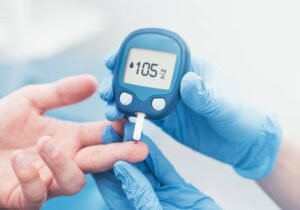Are You at Risk for (PCOS) Polycystic Ovary Syndrome?


Dr. Akhila Reddy Regatte
MBBS, DNB (Family Medicine),
PG Dip Diabetes (Cardiff Univ, UK),
PG Dip Endocrinology (Univ of South Wales, UK)
Are You at Risk for (PCOS) Polycystic Ovary Syndrome?
The Polycystic Ovarian Syndrome, often known as PCOS, is a disorder that affects women of reproductive age and is frequently ignored despite its prevalence. Every 3 in 10 women I see in my clinic come with irregular menstrual cycles, heavy bleeding, or unexplained weight gain, and are eventually diagnosed with PCOS. Acquiring knowledge of polycystic ovary syndrome (PCOS), identifying its early signs, and implementing preventative actions may assist in avoiding long-term consequences. This guide provides a detailed overview of PCOS, its symptoms, risk factors, and possible management strategies.
PCOS: What is it?
PCOS, or Polycystic Ovarian Syndrome, is a hormonal disorder that affects millions of women worldwide. It is primarily distinguished by the following:
Hyperandrogenism
The condition known as hyperandrogenism is characterized by elevated amounts of male hormones, which may result in extreme hair growth or hair loss.
Menstrual Irregularities
Unpredictable or nonexistent menstrual periods.
Polycystic Ovaries
Ovaries that contain several tiny cysts, which may or may not be seen on an ultrasound, are referred to as polycystic ovaries to be more specific.
Insulin Resistance
Present in nearly 80% of women with PCOS, leading to an increased risk of type 2 diabetes.
Infertility, cardiovascular disease, and metabolic disorders are just some of the serious health complications that can result from an untreated case of polycystic ovary syndrome (PCOS).
PCOS’s Most Common Symptoms
1. Menstrual Irregularities
Prolonged Cycles (more than 35 days) – Delays in periods may be an indication of problems with ovulation.
Short Cycles – A hormonal imbalance can also be a sign of short cycles, which are defined as periods that are less than 15 days in length.
Excessive Bleeding (Menorrhagia) – If you replace more than five pads a day, it may be a worry.
Scanty Periods (Oligomenorrhea/Amenorrhea) – Very light bleeding or complete absence of periods.
2. Excessive Hair Growth (Hirsutism) and Hair Thinning
Facial and body hair – Particularly on the chin, upper lip, chest, and back of the body.
Hair Thinning or Baldness – In most cases, the hairline is the starting point for thinning hair or baldness.
Hirsutism – Fifty to sixty percent of women who have PCOS also have hirsutism.
3. Weight Gain and Obesity
Obesity in PCOS – 30-75% of PCOS patients include obesity.
Weight gain cause – Weight gain is often due to insulin resistance and hormonal imbalances.
Weight management – Losing weight may dramatically improve symptoms.
4. Acne and Oily Skin
Persistent acne – There is a correlation between elevated androgen levels and persistent acne.
Oily skin – It is possible for the skin to seem too oily, which may result in recurrent outbreaks.
5. Insulin Resistance and Increased Diabetes Risk
Higher risk of diabetes – Women with PCOS are at a higher risk of developing Type 2 diabetes.
Symptoms – Excessive hunger, fatigue, and difficulty losing weight.
6. Fertility Issues and Difficulty Conceiving
Ovulation problems – Ovulation is disrupted by PCOS, which makes it more difficult to conceive.
Failed attempts – Women may experience multiple failed attempts to get pregnant.
Proper management – Proper management can help restore fertility in many cases.
7. Mood Swings and Depression
Anxiety and depression – Both anxiety and depression can be brought on by hormonal imbalances.
Low self-esteem – Many women with PCOS struggle with low self-esteem due to weight gain and acne.
Risk Factors of PCOS
Certain factors increase the likelihood of developing PCOS. These include:
- Family History – PCOS can be hereditary.
- Obesity – Excess weight can exacerbate insulin resistance and hormonal imbalances.
- Sedentary Lifestyle – Lack of exercise can lead to weight gain and metabolic issues.
- High-Stress Levels – Chronic stress can disrupt hormonal function.
- Poor Diet – Excessive sugar and processed food consumption might increase insulin resistance.
PCOS’s Long-Term Consequences and Potentials
If left untreated, PCOS can lead to several serious health conditions, including:
- Infertility due to irregular ovulation, which makes it difficult to conceive a child.
- Type 2 Diabetes – Due to high insulin resistance.
- Heart Disease – Increased risk of high blood pressure and cholesterol.
- Endometrial Cancer – Due to prolonged menstrual irregularities.
- Sleep Apnea – More common in women with obesity-related PCOS.
Diagnosis and Early Intervention
Early diagnosis can significantly improve the management of PCOS. If you experience two or more of the above symptoms, consult a healthcare professional for evaluation.
Diagnostic Tests for PCOS
Ultrasound – To check for ovarian cysts.
Blood Tests – To measure hormone levels, glucose, and insulin resistance.
Physical Examination – To assess symptoms such as hirsutism and acne.
Managing and Treating PCOS
While there is no permanent cure for PCOS, its symptoms can be effectively managed through lifestyle changes and medical intervention.
1. Lifestyle Modifications
Regular Exercise, Healthy Diet, Stress Management, Adequate Sleep.
2. Medications
Birth Control Pills, Metformin, Anti-Androgen Medications.
3. Fertility Treatments
Ovulation Induction, Assisted Reproductive Technologies (ART).
Conclusion
PCOS is a common yet manageable condition. By recognizing early warning signs and making necessary lifestyle changes, women can minimize risks. If you suspect PCOS, seek medical advice today.
Latest Article

Are You at Risk for (PCOS) Polycystic Ovary Syndrome?

Early Stages of Thyroid


